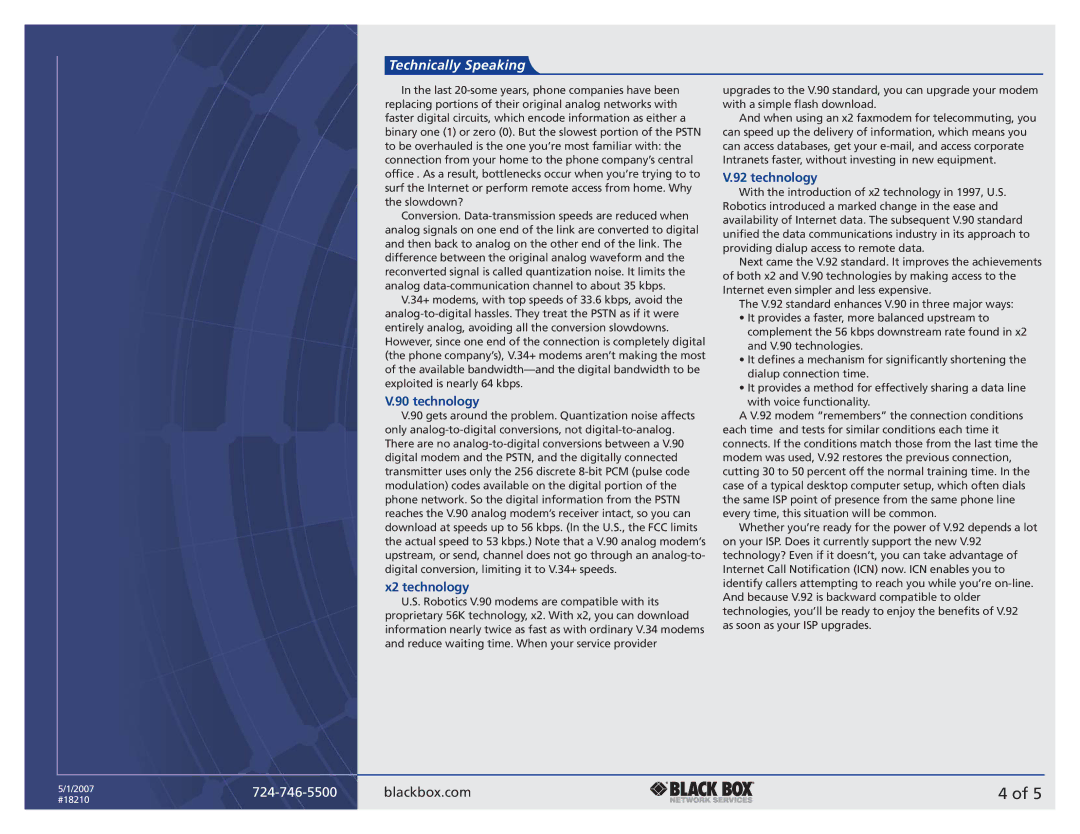
Technically Speaking
In the last
Conversion.
V.34+ modems, with top speeds of 33.6 kbps, avoid the
However, since one end of the connection is completely digital (the phone company’s), V.34+ modems aren’t making the most of the available
V.90 technology
V.90 gets around the problem. Quantization noise affects only
x2 technology
U.S. Robotics V.90 modems are compatible with its proprietary 56K technology, x2. With x2, you can download information nearly twice as fast as with ordinary V.34 modems and reduce waiting time. When your service provider
upgrades to the V.90 standard, you can upgrade your modem with a simple flash download.
And when using an x2 faxmodem for telecommuting, you can speed up the delivery of information, which means you can access databases, get your
V.92 technology
With the introduction of x2 technology in 1997, U.S. Robotics introduced a marked change in the ease and availability of Internet data. The subsequent V.90 standard unified the data communications industry in its approach to providing dialup access to remote data.
Next came the V.92 standard. It improves the achievements of both x2 and V.90 technologies by making access to the Internet even simpler and less expensive.
The V.92 standard enhances V.90 in three major ways:
•It provides a faster, more balanced upstream to complement the 56 kbps downstream rate found in x2 and V.90 technologies.
•It defines a mechanism for significantly shortening the dialup connection time.
•It provides a method for effectively sharing a data line
with voice functionality.
A V.92 modem “remembers” the connection conditions each time and tests for similar conditions each time it connects. If the conditions match those from the last time the modem was used, V.92 restores the previous connection, cutting 30 to 50 percent off the normal training time. In the case of a typical desktop computer setup, which often dials the same ISP point of presence from the same phone line every time, this situation will be common.
Whether you’re ready for the power of V.92 depends a lot on your ISP. Does it currently support the new V.92 technology? Even if it doesn‘t, you can take advantage of Internet Call Notification (ICN) now. ICN enables you to identify callers attempting to reach you while you’re
5/1/2007 | blackbox.com | ||
#18210 | |||
|
|
4 of 5
